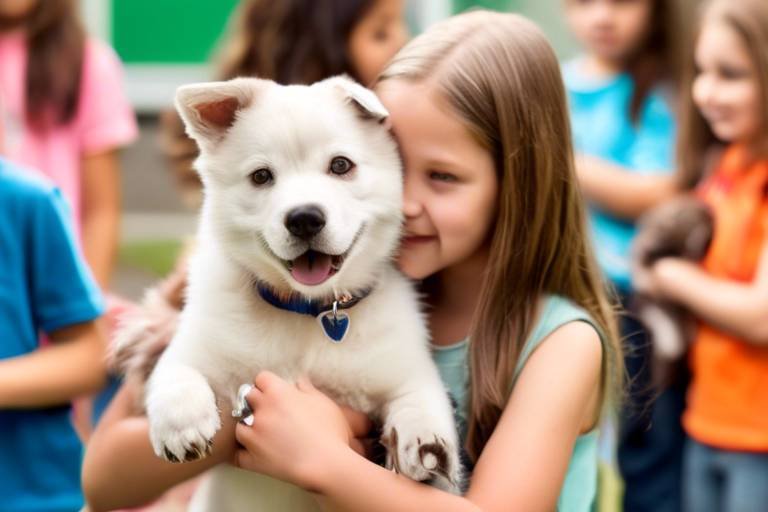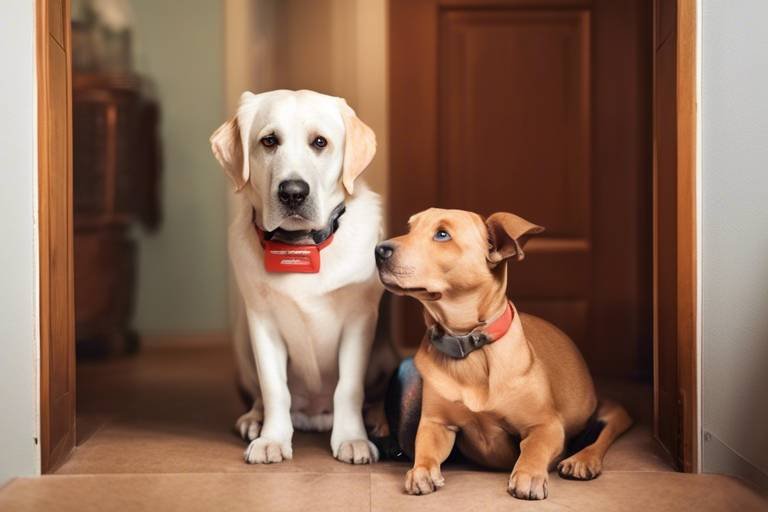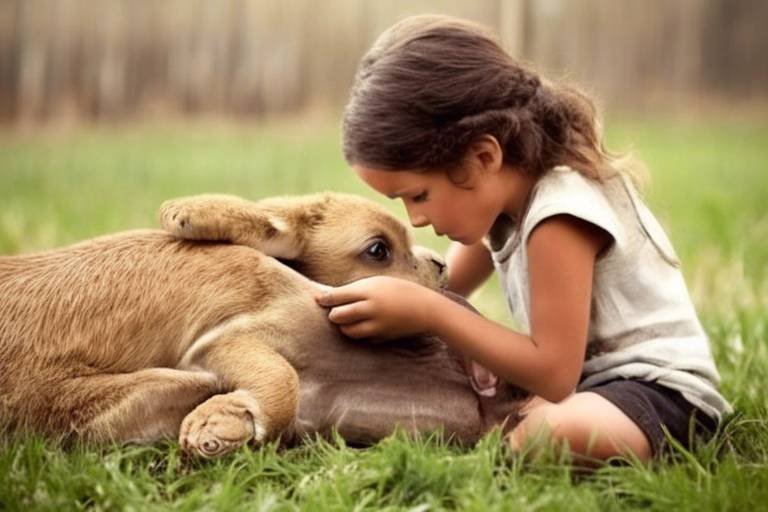Tips for Adopting a Dog from a Shelter
Adopting a dog from a shelter is not just a decision; it's a heartfelt commitment that can change the life of both you and your new furry friend. Imagine walking into a shelter, surrounded by wagging tails and hopeful eyes, each dog waiting for a second chance at happiness. By choosing to adopt, you’re not only giving a homeless dog a loving home but also making a significant impact on your community. It’s a beautiful act of kindness that can lead to an unbreakable bond.
Adopting from a shelter is a noble choice, and the significance of this action cannot be overstated. Every year, millions of dogs find themselves in shelters, often through no fault of their own. By adopting, you're stepping up to provide a second chance for these animals. Not only do you save a life, but you also gain a loyal companion who will shower you with unconditional love. The benefits are numerous:
- Saving a Life: Many shelter dogs face euthanasia if not adopted.
- Cost-Effective: Adoption fees are generally much lower than buying from a breeder and often include vaccinations and spaying/neutering.
- Variety of Choices: Shelters have dogs of all breeds, sizes, and ages, allowing you to find the perfect match.
Before bringing your new dog home, it’s crucial to create a safe and welcoming environment. Think of your home as a cozy nest where your new friend can feel secure. Start by gathering essential supplies such as a comfortable bed, food and water bowls, high-quality dog food, toys, and grooming tools. It’s also wise to dog-proof your home by removing any hazardous items that could be harmful. Just like baby-proofing for a toddler, you want to ensure your new pup can explore without getting into trouble!
When it comes to selecting the right dog, it’s essential to consider factors like breed, age, and temperament. You wouldn’t buy a sports car if you needed a family vehicle, right? Similarly, you need to choose a dog that fits your lifestyle. For instance, active individuals may prefer high-energy breeds that can keep up with their outdoor adventures, while those who enjoy a quieter life might opt for a more laid-back companion. Think about:
- How much time you can dedicate to exercise and play.
- Your living situation—do you have a yard or live in an apartment?
- Any allergies to specific breeds.
Your first meeting with a potential furry friend is crucial. This is your opportunity to assess their personality and behavior. Spend time interacting with the dog—play with them, observe how they react to you and others, and see if there’s a spark. Just like a first date, you want to feel that connection! Pay attention to their energy levels and how they respond to your cues. Remember, a dog that seems shy might just need a little extra time to warm up to you.
Before finalizing your adoption, it’s essential to be aware of the health considerations involved. Most shelters provide initial health checks and vaccinations, but it’s wise to ask about any potential medical issues that might arise. Understanding the dog’s health history can help you prepare for future vet visits. Investing in a good pet insurance plan can also save you from unexpected expenses down the line. After all, just like us, our furry friends need regular check-ups and occasional medical care!
Training and socialization are vital for your new dog’s well-being. Think of training as building a language between you and your pup. It’s not just about teaching commands; it’s about establishing trust and understanding. Start with basic obedience training and gradually introduce your dog to various environments, people, and other animals. Consistency and patience are key! Remember, a well-trained dog is not only a joy to have but also a safer companion.
While adopting a dog is often more affordable than purchasing one, it’s important to budget for both initial and ongoing expenses. Adoption fees usually cover vaccinations, spaying/neutering, and sometimes even initial supplies. Here’s a quick breakdown of typical costs:
| Expense | Estimated Cost |
|---|---|
| Adoption Fee | $50 - $300 |
| Initial Supplies | $100 - $200 |
| Monthly Food | $30 - $100 |
| Veterinary Care | $200 - $500 annually |
Once you bring your new dog home, the transition period is crucial. Just like moving to a new city, your dog will need time to adjust to their new surroundings. Establish a routine that includes regular feeding times, walks, and play sessions. Be patient; it may take a few days or even weeks for your dog to feel completely at ease. Setting boundaries early on can help your pup understand what is expected, leading to a more harmonious living situation.
Finally, building a strong relationship with your adopted dog is all about love, attention, and shared experiences. Spend quality time together, whether it’s going for walks, playing fetch, or simply snuggling on the couch. These moments create lasting memories and deepen your bond. Remember, a happy dog is a well-loved dog, and your efforts will be rewarded with loyalty and affection that lasts a lifetime.
Q: What should I do if my adopted dog has behavioral issues?
A: It’s common for shelter dogs to have some behavioral challenges. Consider enrolling in a training class or consulting with a professional dog trainer who can help you address these issues effectively.
Q: How can I tell if a dog is a good fit for my family?
A: Spend time interacting with the dog at the shelter. Observe how they react to different situations and people. Ask the shelter staff for insights about the dog's personality and history.
Q: What if I have other pets at home?
A: Introduce your new dog to your existing pets gradually and in a controlled manner. Supervised meetings can help ensure everyone feels safe and comfortable.

Understanding Shelter Adoption
When it comes to adopting a dog, choosing to adopt from a shelter is not just a decision; it's a life-changing commitment for both you and your new furry friend. Shelters are often filled with dogs that have faced hardship, abandonment, or neglect, and by adopting, you're not just gaining a pet; you're giving a second chance to a deserving animal. Think of it like finding a hidden gem in a thrift store; sometimes, the best treasures are the ones that have been overlooked.
Adopting from a shelter has numerous benefits. For one, you are helping to combat the ongoing issue of pet overpopulation. Shelters are often overcrowded, and by adopting, you are making space for another dog in need. Additionally, many shelters work hard to ensure that their animals are healthy and well-socialized. Most dogs in shelters have been vaccinated, spayed or neutered, and are often already trained to some degree, which can save you time and money in the long run. You might even find that your new companion is already familiar with basic commands, making the transition to home life smoother.
Moreover, adopting from a shelter can be an incredibly rewarding experience. The bond you create with a rescue dog is often profound, as they seem to understand that you have given them a chance at a better life. Imagine the joy of seeing your dog thrive in a loving environment after having faced uncertainty! It's like watching a flower bloom after a long winter; the transformation can be nothing short of miraculous.
However, it's important to recognize that adopting a dog is a long-term commitment, often lasting 10-15 years or more. You need to consider factors like your lifestyle, living situation, and the time you can dedicate to training and companionship. Before heading to your local shelter, ask yourself the following questions:
- Are you ready for the responsibility of a pet?
- Do you have the time to train and socialize a new dog?
- Can you accommodate a dog in your living space?
- Are you prepared for the financial commitments involved?
In conclusion, understanding the significance of shelter adoption can help you make a more informed decision. It’s not just about finding a pet; it’s about making a difference in the life of a dog that needs you. So, if you’re ready to embark on this heartwarming journey, know that you’re not just adopting a dog; you’re gaining a loyal companion who will fill your life with love and joy.

Preparing Your Home
Bringing a new dog into your life is an exciting adventure, but before you dive headfirst into this journey, it’s crucial to ensure your home is ready for your furry friend. Just like a cozy blanket on a chilly night, a well-prepared space can make all the difference for your new companion. Imagine how overwhelming it must feel for a dog to step into a new environment filled with unfamiliar smells, sounds, and sights. By taking the time to prepare your home, you’re not just making it comfortable; you’re also signaling to your dog that they are safe and loved.
First things first, let’s talk about the essentials. You’ll want to gather some basic supplies to make your dog feel at home right away. This includes a comfy bed, food and water bowls, high-quality dog food, toys for mental stimulation, and a leash and collar for those exciting walks. Think of these items as the building blocks of your dog’s new life with you. You wouldn’t move into a new place without furniture, right? Here’s a quick list of must-have supplies:
- Dog bed: A cozy spot for your dog to rest.
- Food and water bowls: Opt for stainless steel or ceramic for durability.
- High-quality dog food: Consult with your vet for the best options.
- Toys: Chew toys, balls, and interactive toys to keep them entertained.
- Leash and collar: Essential for walks and outings.
Next up, let’s think about safety. Just like baby-proofing a home for a toddler, you need to dog-proof your space. Dogs are naturally curious creatures, and they love to explore. This means you should secure any hazardous materials, such as cleaning supplies, medications, and electrical cords. Consider using baby gates to restrict access to certain areas of your home, especially if you have valuable items or fragile decor. Additionally, check your yard for any escape routes. A dog can be surprisingly crafty when it comes to finding ways to escape, so ensure your fences are secure.
Creating a designated area for your dog can also help them adjust. This could be a cozy corner in the living room or a specific room where they can feel safe and relaxed. You can make it inviting with their bed, toys, and maybe even a blanket that smells like you. This space will be their sanctuary, where they can retreat when they need a break from the excitement of your household.
Don’t forget about the importance of routine. Dogs thrive on consistency, and having a daily schedule can help them feel more secure. Set regular feeding times, walks, and play sessions. This not only helps your dog adjust but also strengthens the bond you’re building together. Imagine how comforting it is to know what to expect each day; your dog will feel the same way!
Lastly, be prepared for some adjustments. No matter how much you plan, every dog is unique, and they may need time to acclimate to their new surroundings. Be patient and give them the space they need to explore and settle in. Just like a new friend, it might take a little while for your dog to feel completely comfortable and at home.
In summary, preparing your home for a new dog involves gathering essential supplies, ensuring safety, creating a designated space, establishing a routine, and being patient during the adjustment period. By taking these steps, you’re not just preparing your home; you’re opening your heart and home to a new family member who will bring joy, love, and companionship into your life.
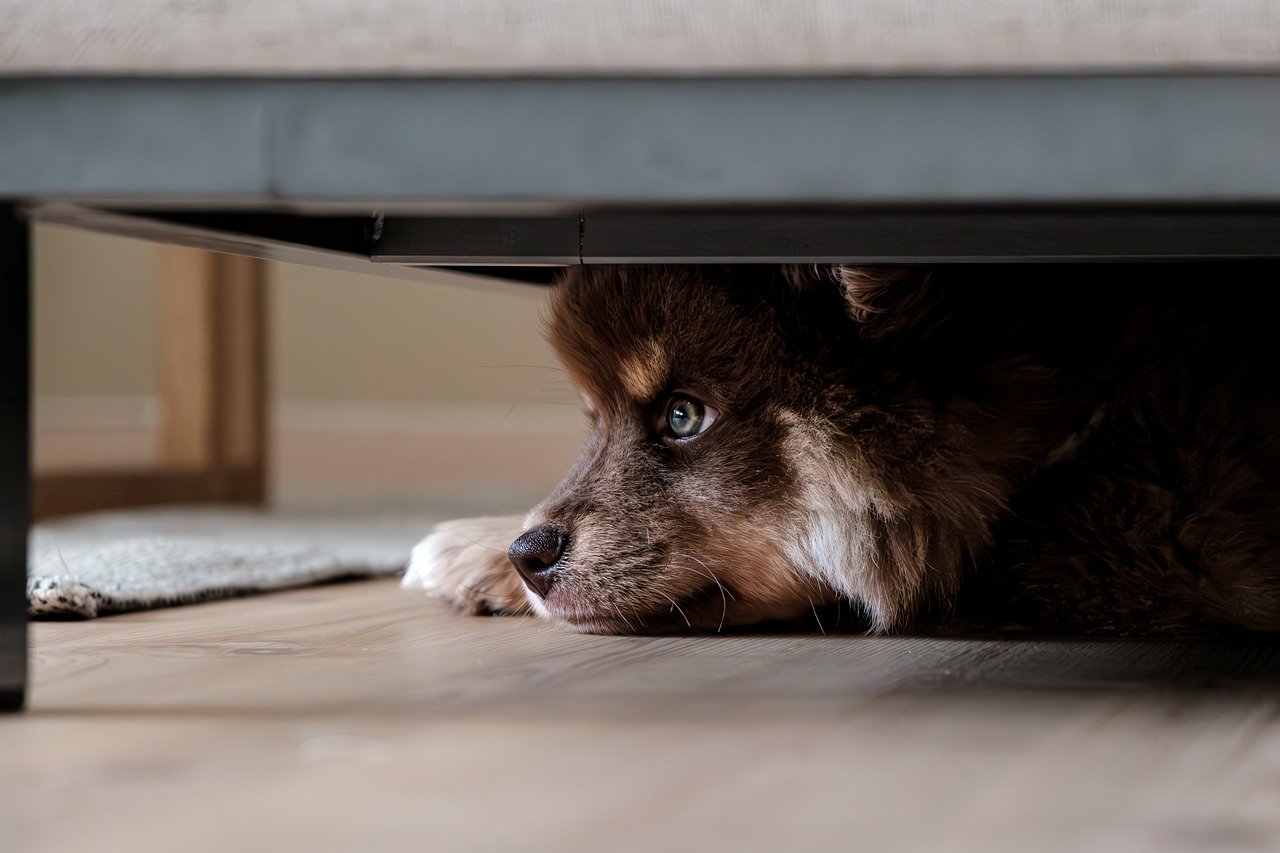
Choosing the Right Dog
When it comes to , it's much more than just picking the cutest pup in the shelter. Sure, that little ball of fluff might steal your heart at first glance, but there are several important factors to consider to ensure that you and your new furry friend are a perfect match. After all, adopting a dog is like entering a long-term relationship; compatibility is key!
First and foremost, think about your lifestyle. Are you an active person who enjoys outdoor adventures, or do you prefer cozy nights in with a good book? Understanding your daily routine will help you determine the type of dog that fits best with your life. For instance, if you love hiking, a high-energy breed like a Border Collie or a Labrador Retriever might be ideal. Conversely, if you’re more of a couch potato, a laid-back breed such as a Basset Hound or a Shih Tzu could be more suitable.
Next, consider the size of the dog. Larger breeds often require more space and exercise, while smaller dogs can adapt more easily to apartment living. It’s essential to evaluate your living situation and ensure that you can accommodate your new pet comfortably. A table comparing different dog sizes and their general needs can be quite helpful:
| Dog Size | Exercise Needs | Space Requirements |
|---|---|---|
| Small | Low to Moderate | Apartments or small homes |
| Medium | Moderate | Homes with small yards |
| Large | High | Homes with large yards |
Another crucial aspect to consider is the dog's temperament. Some dogs are naturally more outgoing and friendly, while others may be shy or reserved. Spend time interacting with different breeds and personalities at the shelter. Look for a dog that not only captures your heart but also matches your energy levels and social preferences. For example, if you have young children, a dog that is known for being patient and gentle, like a Golden Retriever, might be the best choice.
Don’t forget to take into account the dog's age. Puppies require a lot of time and training, which can be a significant commitment. On the other hand, adult dogs are often already trained and may have established personalities, making them easier to integrate into your home. Adopting an older dog can also be incredibly rewarding, as you’re giving a loving companion a second chance at life.
Lastly, it's essential to factor in any allergies or health concerns you or your family members may have. Some breeds are more hypoallergenic than others, so if allergies are a concern, consider breeds like the Poodle or Bichon Frise. Do your research and consult with shelter staff about the best options for your situation.
In conclusion, choosing the right dog is a multifaceted decision that requires careful consideration of your lifestyle, living situation, and personal preferences. By taking the time to evaluate these factors, you’ll be well on your way to finding a furry companion who will bring joy and love into your life for years to come. Remember, it’s not just about choosing a dog; it’s about choosing a lifelong friend!

Meeting the Dog
When it comes to adopting a dog from a shelter, the initial meeting is like a first date—it's all about making that crucial connection. You might be excited, nervous, or even a bit overwhelmed by the choices in front of you. But fear not! This is your opportunity to get to know your potential new furry friend and assess whether they are the right fit for your home and lifestyle.
Before you dive into meeting the dogs, it's essential to have a clear idea of what you're looking for. Are you hoping for a playful puppy that will keep you on your toes, or a calm older dog who enjoys lounging on the couch? Knowing your preferences can help guide your interactions and make the process smoother. Remember, just like people, dogs have unique personalities and quirks, so be prepared for some surprises!
During your visit to the shelter, take your time to observe the dogs in their kennels. Look for one that catches your eye, but also take note of their behavior. Are they barking excitedly, or are they quietly observing their surroundings? This can give you a clue about their temperament. When you finally meet a dog, be sure to approach with an open mind and heart. Here are some things to keep in mind:
- Body Language: Pay attention to how the dog reacts to your presence. A wagging tail and relaxed body posture usually indicate a friendly demeanor, while a tucked tail or growling may signal discomfort or fear.
- Interaction: Spend some time with the dog. Sit down and let them come to you. This helps build trust and allows you to gauge their level of comfort with new people.
- Playtime: Engage in some light play. Toss a toy or take them for a short walk around the shelter. This not only helps you see their energy levels but also gives you insight into their personality.
It's also a good idea to ask the shelter staff about the dog's history. They can provide valuable information about the dog’s past behavior, health, and any special needs or quirks. Knowing if a dog has been through trauma can help you understand their behavior better and prepare you for any challenges that might arise.
Don't forget to bring along family members or other pets if possible. This way, everyone can meet the new potential family member and ensure that everyone gets along. Just like in a human relationship, compatibility is key! After all, you want to create a harmonious household where everyone feels comfortable and loved.
Lastly, trust your instincts. If you feel a spark of connection with a dog, that’s a good sign! However, if something feels off, it’s perfectly okay to keep looking. There are countless dogs in shelters waiting for their forever homes, and the right one is out there for you.
In summary, meeting a dog at the shelter is an exciting and pivotal moment in the adoption process. By being observant, patient, and open to the experience, you can make an informed decision that will lead to a fulfilling companionship. Remember, this is just the beginning of a beautiful journey together!

Health Considerations
When it comes to adopting a dog from a shelter, one of the most crucial aspects to consider is their health. Just like humans, dogs can have a variety of health issues, and being aware of these can help you prepare for your new furry friend. First and foremost, ensure that you ask the shelter about the dog’s medical history. Most shelters will provide you with information on vaccinations, spaying or neutering, and any previous health issues. Understanding these factors will help you gauge the overall health of the dog and what to expect in the future.
It's essential to prioritize vaccinations when adopting a shelter dog. Vaccinations protect your dog from various diseases that can be serious or even fatal. Common vaccinations include those for rabies, distemper, parvovirus, and bordetella. If the dog has not been vaccinated, you’ll need to schedule an appointment with a veterinarian soon after adoption to ensure they are up-to-date on their shots. Moreover, regular check-ups are vital to catch any potential health issues early on.
Another important factor to consider is the possibility of pre-existing conditions. Some shelter dogs may have been treated for conditions like heartworm, skin infections, or allergies. It’s important to discuss any potential medical issues with the shelter staff and your veterinarian. They can provide you with insights into the dog's health and any special care they may need. For example, if a dog has a history of skin allergies, you might need to invest in special shampoos or dietary changes to keep their skin healthy.
Additionally, be prepared for the potential costs associated with your dog's health care. Here’s a quick breakdown of some typical expenses you might encounter:
| Expense Type | Estimated Cost |
|---|---|
| Initial Vet Visit | $50 - $150 |
| Vaccinations | $75 - $100 |
| Spaying/Neutering | $150 - $300 |
| Monthly Preventative Medications | $30 - $50 |
As you prepare to welcome your new companion, it's also wise to consider their diet. A balanced diet is crucial for maintaining your dog’s health. Consult with your vet about the best food options for your dog’s age, breed, and health status. Some dogs may require special diets due to allergies or sensitivities, which can affect their overall well-being. Remember, a well-fed dog is a happy dog!
Finally, don't forget about mental health. Just like us, dogs can experience anxiety and stress, especially during the transition to a new home. Providing a stable environment, regular exercise, and plenty of love can help your new dog adjust. Consider engaging in activities that stimulate their mind, such as puzzle toys or training exercises. These can be a great way to bond with your new friend while also ensuring they are mentally healthy.
In conclusion, adopting a dog from a shelter can be one of the most rewarding experiences of your life. However, it’s essential to be proactive about their health needs. By understanding their medical history, keeping up with vaccinations, budgeting for health care, providing a balanced diet, and ensuring their mental well-being, you’ll set the stage for a long and happy life together. Remember, your new dog relies on you for their health and happiness, so make it a priority!
- What should I do if my adopted dog shows signs of illness?
Contact your veterinarian immediately for advice and possible treatment. - How often should I take my dog to the vet?
Generally, annual check-ups are recommended, but puppies and senior dogs may need more frequent visits. - What vaccinations does my dog need?
Common vaccinations include rabies, distemper, parvovirus, and bordetella. Consult your vet for a tailored vaccination schedule. - Are shelter dogs more prone to health issues?
Not necessarily, but some may have had less than ideal living conditions prior to adoption, so it's important to be vigilant.

Training and Socialization
When you bring a new dog into your home, you’re not just gaining a pet; you’re welcoming a new family member. One of the most crucial steps in this journey is . Think of it as laying down the foundation for a strong, trusting relationship. A well-trained dog is not only a joy to have but also a safe companion. So, where do you start?
First and foremost, **consistency** is key. Dogs thrive on routine, and establishing a consistent training schedule helps them understand what’s expected. Start with basic commands such as sit, stay, and come. These commands are the building blocks of good behavior and can prevent many potential issues down the line. Using positive reinforcement, such as treats or praise, can make training a fun experience for both you and your furry friend. Remember, patience is essential! Training is not a race; it's more like a marathon. Celebrate small victories, and don’t be discouraged by setbacks.
Socialization is equally important. It’s not just about training your dog to obey commands; it’s about exposing them to different environments, sounds, people, and other animals. This process helps to build their confidence and reduces the likelihood of fear-based behaviors. Start by introducing your new dog to various settings, such as parks, busy streets, or friend’s homes. Ensure these experiences are positive. You might even consider enrolling in a puppy socialization class where your dog can interact with other dogs in a controlled environment. Here’s a quick tip: always monitor your dog’s body language during these interactions. If they seem anxious or overwhelmed, it’s okay to take a step back and give them some space.
To give you a clearer picture, here’s a simple table summarizing key training and socialization techniques:
| Technique | Description | Benefits |
|---|---|---|
| Basic Commands | Teach essential commands using positive reinforcement. | Builds trust and improves communication. |
| Routine Training | Establish a consistent training schedule. | Helps your dog understand expectations. |
| Socialization Outings | Expose your dog to various environments and situations. | Reduces anxiety and builds confidence. |
| Training Classes | Enroll in classes for structured training and socialization. | Provides guidance and a safe space to learn. |
As you embark on this training journey, remember that every dog is unique. Some may take to training like a fish to water, while others might need a bit more time and understanding. It’s essential to adapt your approach based on your dog’s personality and needs. If you ever feel overwhelmed, don’t hesitate to seek help from a professional trainer. They can offer tailored advice and strategies that suit your specific situation.
Lastly, make training and socialization a part of your daily life. Incorporate it into walks, playtime, and even during quiet moments at home. The more you engage with your dog, the stronger your bond will become. So, let the training begin, and watch as your new companion flourishes into a well-behaved, confident member of your family!
- How long does it take to train a dog? Training duration varies by dog and the complexity of commands, but consistency over weeks or months is essential.
- What if my dog is afraid of other dogs? Gradual exposure and positive reinforcement can help. Consider working with a trainer for specialized techniques.
- Is socialization really that important? Absolutely! Proper socialization helps prevent behavioral issues and ensures your dog is comfortable in various situations.
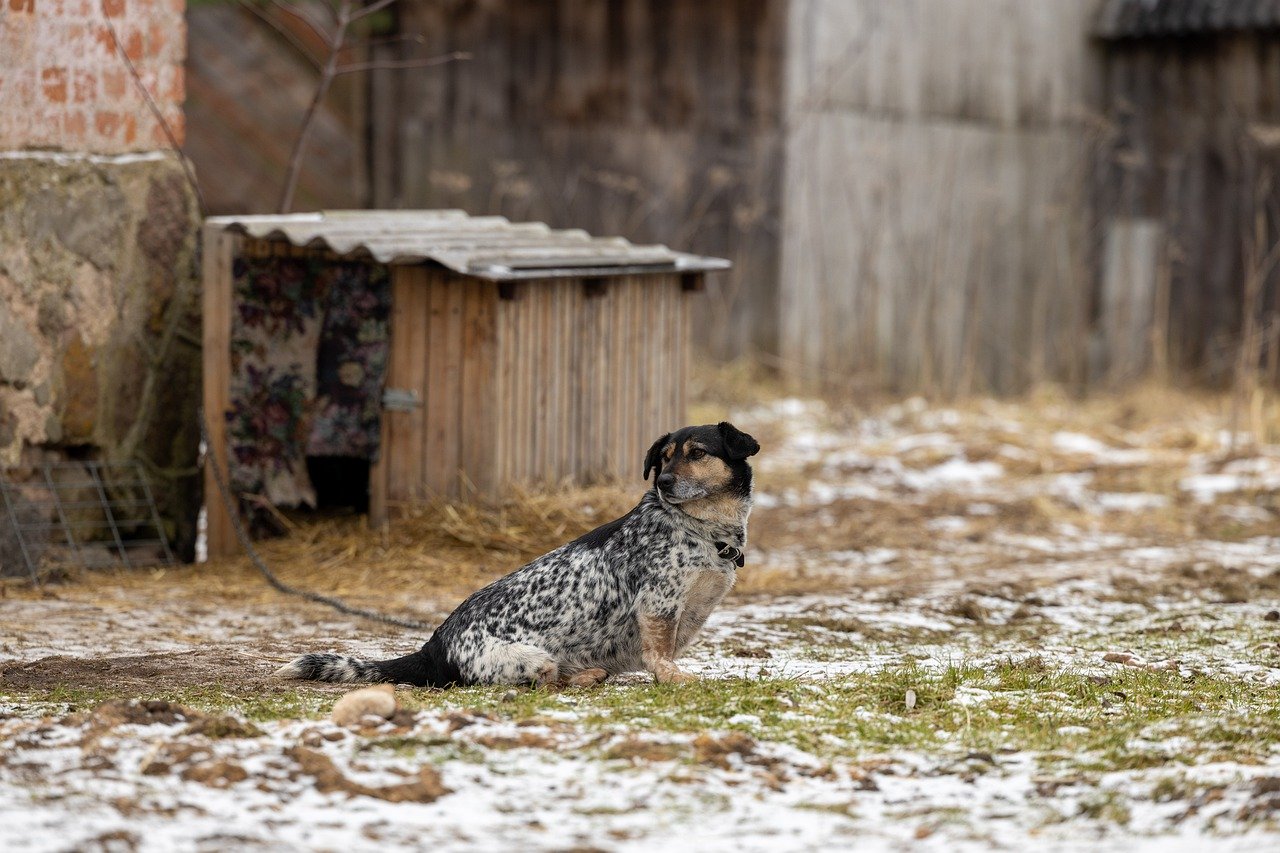
Adoption Fees and Costs
When it comes to adopting a dog from a shelter, one of the first things you might wonder about is the financial aspect of the process. Understanding the adoption fees and other associated costs can help you prepare for this exciting journey. Generally, the adoption fee can vary significantly from one shelter to another, but it typically ranges from $50 to $200. This fee often covers essential services such as spaying or neutering, vaccinations, and sometimes even a microchip for identification. Think of it as an investment in your new furry friend’s health and well-being!
But wait, there's more! The adoption fee is just the tip of the iceberg. Once you bring your new dog home, there are ongoing costs that you should consider. These can include:
- Food: Depending on the size and dietary needs of your dog, you might spend anywhere from $30 to $100 per month.
- Routine Veterinary Care: Regular check-ups and vaccinations can add up to around $200 to $500 annually.
- Grooming: Depending on the breed, grooming costs can vary widely, with some dogs needing professional grooming every few months.
- Supplies: Don’t forget about the initial costs for essentials like a leash, collar, food and water bowls, a bed, toys, and more, which can total around $100 to $300.
- Training: Investing in training classes can help your dog become a well-behaved member of your family, costing anywhere from $100 to $300 for basic obedience courses.
Here's a handy table to summarize the typical costs associated with adopting a dog:
| Cost Category | Estimated Cost |
|---|---|
| Adoption Fee | $50 - $200 |
| Monthly Food | $30 - $100 |
| Annual Veterinary Care | $200 - $500 |
| Initial Supplies | $100 - $300 |
| Training Classes | $100 - $300 |
In addition to these costs, it’s crucial to be prepared for unexpected expenses that may arise. Just like humans, dogs can face health issues or accidents that require immediate attention. Having a small emergency fund set aside for your pet can save you from stressful situations down the line. Think of it as a safety net for your furry companion!
All in all, while the initial adoption fee might seem like a significant expense, the real costs of dog ownership extend far beyond that. By budgeting for these expenses, you can ensure that you provide a loving and stable environment for your new best friend. Remember, adopting a dog is not just about saving a life; it’s also about committing to a relationship that will bring joy and companionship for years to come.

Transitioning to Your Home
Bringing a new dog into your home is like opening a new chapter in your life—exciting yet filled with unknowns. The transition period is crucial for both you and your furry friend, as it sets the tone for your future relationship. Remember, your new dog has just left a familiar environment, and everything around them is new and possibly overwhelming. To make this transition smoother, it’s essential to establish a routine that helps your dog feel safe and secure.
First off, create a designated space for your dog. This can be a cozy corner with a comfy bed, some toys, and a water bowl. Think of it as their little sanctuary where they can retreat when feeling anxious. It's important to keep this area quiet and free from too much foot traffic, allowing your new pet to acclimate at their own pace. Over time, they’ll begin to associate this space with comfort and safety, which is vital for their emotional well-being.
Next, consider establishing a consistent routine. Dogs thrive on predictability, and having a structured schedule can help them adjust more quickly. This includes regular feeding times, walks, and play sessions. Just like us, dogs feel more secure when they know what to expect. For instance, if you feed your dog at 7 AM and 6 PM every day, they’ll start to anticipate meal times, reducing anxiety and stress. You can also incorporate training sessions into this routine, which not only helps with obedience but also strengthens your bond.
During this transition, patience is key. Just like a shy child on their first day of school, your dog may take some time to come out of their shell. Allow them to explore their new home at their own pace. If they seem hesitant to venture into certain areas, don’t force them. Instead, encourage them gently with toys or treats, making the experience positive. Gradually, they will grow more confident and curious about their surroundings.
Furthermore, it’s essential to set boundaries from the start. Establishing rules early on—like which areas of the house are off-limits or whether they can jump on the furniture—will help your dog understand what is expected of them. Consistency is vital here; everyone in the household should be on the same page to avoid confusion. Imagine trying to play a game where the rules keep changing; it would be frustrating, right? Your dog feels the same way when boundaries are unclear.
Finally, don’t forget to shower your new companion with love and attention. Spend quality time together, whether it’s through walks, playtime, or simply cuddling on the couch. This not only helps your dog feel more comfortable but also fosters a strong bond between you two. Over time, your new furry friend will learn to trust you and see you as their forever home.
- How long does it take for a dog to adjust to a new home? It varies by dog, but it can take anywhere from a few days to several weeks. Patience is essential during this time.
- What should I do if my dog seems anxious? Provide a safe space, maintain a routine, and consider using calming aids like toys or pheromone diffusers.
- Is it normal for my dog to hide at first? Yes, many dogs will seek out quiet places as they adjust. Give them time and space to feel comfortable.
- How can I help my dog feel more secure? Establish a routine, provide a safe space, and spend quality time together to build trust.
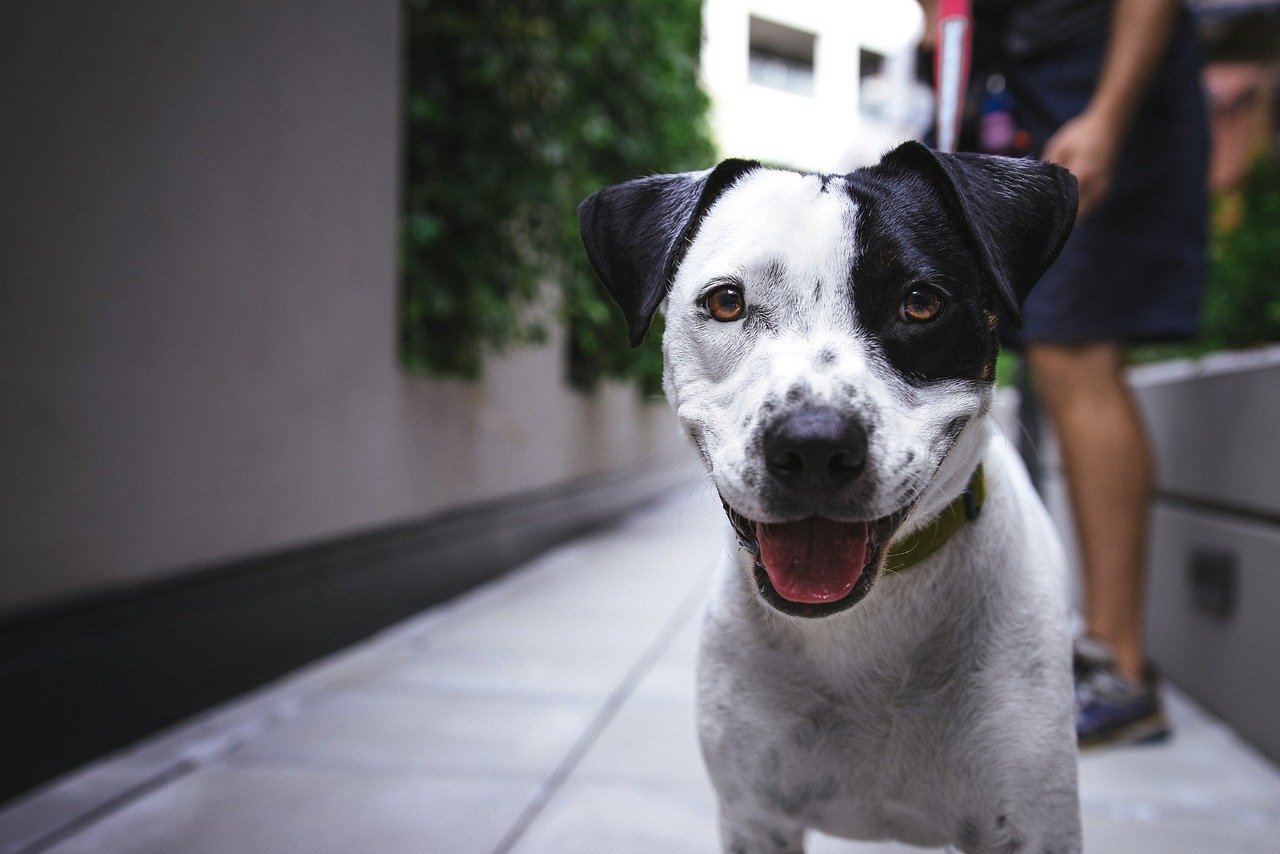
Building a Lifelong Bond
Establishing a strong, lasting connection with your newly adopted dog is one of the most rewarding experiences you can have as a pet owner. Just like any relationship, it takes time, effort, and a sprinkle of love to develop that unbreakable bond. So, how do you go about creating this special connection? It’s all about understanding your furry friend, meeting their needs, and sharing memorable moments together. Think of it as building a bridge; the stronger the foundation, the more reliable the structure.
First and foremost, spending quality time with your dog is essential. This doesn’t mean just being in the same room; it means engaging in activities that both of you enjoy. Whether it’s a leisurely walk in the park, a game of fetch, or simply cuddling on the couch, these shared experiences help to deepen your connection. Dogs are incredibly perceptive and can sense your emotions, so showing them affection and positivity will encourage them to reciprocate. Just imagine how a simple game of tug-of-war can turn into a cherished memory, solidifying your bond with laughter and joy!
Another key element in building a lifelong bond is communication. Dogs may not speak our language, but they certainly have their own ways of expressing themselves. Pay close attention to their body language and vocalizations. Are they wagging their tail excitedly? That’s a good sign they’re happy! Are they growling or backing away? It might be their way of telling you they need some space. By learning to interpret these signals, you can respond appropriately, fostering trust and understanding. Think of it as a dance; the more in sync you are with your partner, the more graceful the movements become.
Training is another vital aspect of nurturing your relationship. It’s not just about teaching your dog to sit or stay; it’s about establishing a framework for communication and cooperation. Positive reinforcement techniques, such as treats and praise, can work wonders in shaping your dog’s behavior while also strengthening your bond. When your dog learns to associate good behavior with rewards, they become more eager to please you, creating a harmonious dynamic. Remember, patience is key here! Just like learning to ride a bike, it takes time to master the skills.
Moreover, socialization plays a crucial role in your dog’s development and your relationship. Exposing your dog to different environments, people, and other animals helps them become well-adjusted and confident. This not only enriches their life but also makes outings together more enjoyable. Imagine the joy of taking your dog to a dog park where they can frolic freely, meet new friends, and show off their playful personality. These experiences create lasting memories and strengthen your bond.
Lastly, never underestimate the power of routine. Dogs thrive on consistency, and establishing a daily routine helps them feel secure and loved. Regular feeding times, walks, and play sessions create a sense of stability that your dog will appreciate. It’s like having a reliable schedule; it gives them something to look forward to each day. Plus, routines can help in managing any behavioral issues that may arise, as they provide a structured environment for your dog to flourish.
In conclusion, building a lifelong bond with your dog is a beautiful journey filled with love, patience, and shared experiences. By spending quality time together, communicating effectively, training, socializing, and establishing routines, you’ll create a loving and fulfilling relationship that lasts a lifetime. Remember, every moment spent with your furry friend is an opportunity to strengthen that bond. So, grab that leash, head out the door, and start creating those cherished memories together!
- How long does it take to bond with my new dog? - Bonding can vary from dog to dog, but typically, it takes a few weeks to a few months to establish a strong connection.
- What are some signs that my dog is bonding with me? - Signs include seeking your attention, following you around, wagging their tail when they see you, and showing excitement during playtime.
- Can I bond with my dog through training? - Absolutely! Training is a fantastic way to bond, as it builds trust and communication between you and your dog.
- How can I help my dog feel more comfortable in their new home? - Create a safe space for them, maintain a routine, and give them plenty of love and patience as they adjust.
Frequently Asked Questions
- Why should I adopt a dog from a shelter instead of buying one?
Adopting a dog from a shelter gives a loving home to a pet in need and helps reduce the number of homeless animals. Plus, shelter dogs often come vaccinated and spayed/neutered, which can save you money!
- What supplies do I need before bringing my new dog home?
Before your new furry friend arrives, make sure you have the essentials: food and water bowls, high-quality dog food, a comfortable bed, toys, a leash and collar, grooming supplies, and a safe space for them to explore.
- How do I choose the right dog for my family?
Think about your lifestyle! Consider factors like the dog's size, age, energy level, and temperament. If you have kids or other pets, make sure to choose a dog that fits well with your family dynamics.
- What should I expect during the initial meeting at the shelter?
During your visit, take your time to interact with the dogs. Look for a dog that shows interest in you and responds positively to your presence. Pay attention to their behavior and personality to ensure a good match!
- What health checks should I be aware of when adopting?
Make sure the shelter provides health records, including vaccinations and any medical history. Ask about common issues related to the breed you’re considering and ensure your new dog has been checked for any health concerns.
- How can I train my new dog effectively?
Start with basic obedience training using positive reinforcement techniques. Consistency is key! Enroll in classes or seek help from professional trainers to help your dog learn good manners and social skills.
- What are the typical costs associated with shelter adoption?
Adoption fees can vary by shelter but typically range from $50 to $300. Additionally, consider costs for food, vet visits, grooming, training, and supplies to budget for your new pet's needs.
- How can I help my new dog adjust to their home?
Establish a routine to help your dog feel secure. Create a safe space, set boundaries, and be patient as they adapt. Gradually introduce them to different areas of your home and family members.
- What are some ways to build a strong bond with my adopted dog?
Spend quality time together through play, walks, and training sessions. Show them love and affection, and engage in activities that stimulate their mind and body, creating a fulfilling relationship.




